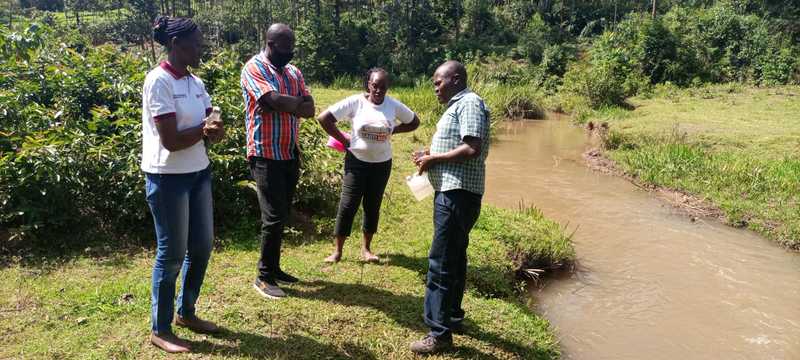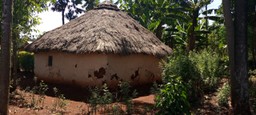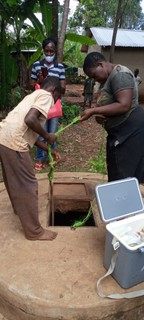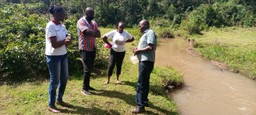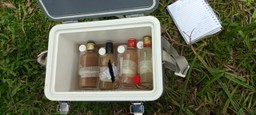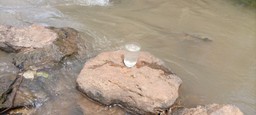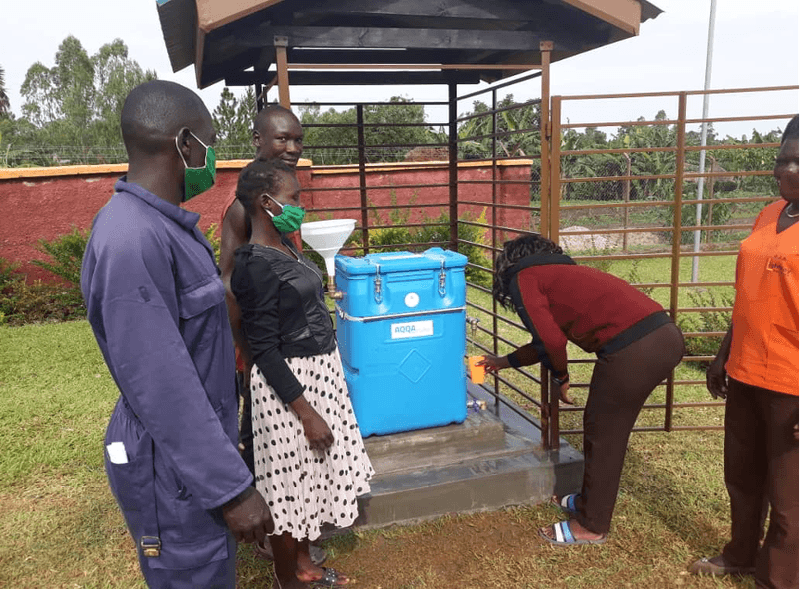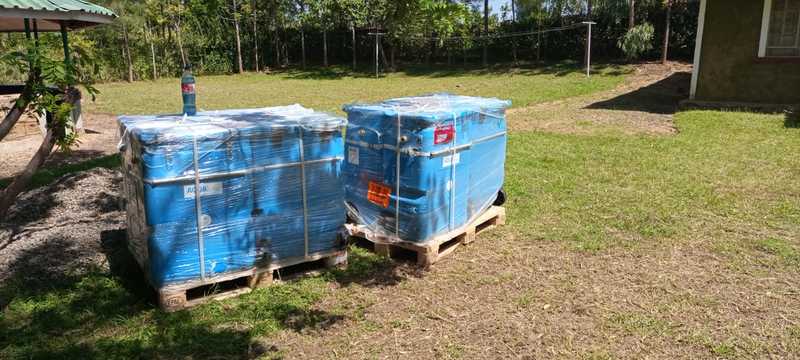If you enter the town of Shinyalu on Google Maps, the first thing you see are linked images of green forests, beautiful landscapes, many rivers and waterfalls. It seems as if the place does not have to struggle with periods of drought or a limited supply of drinking water. But appearances are deceiving. Major problems with contaminated drinking water plague the place. For this reason, WeWater is planning to help the people of Shinyalu to support the health workers on site.
Shinyalu is a small town in western Kenya in the county of Kakamega, an hour’s drive from Kisumu or Lake Victoria. The population is 22,000, and poverty there is above the national average. However, progress can also be seen there: Infant mortality has fallen in recent years and fewer people have fallen ill with malaria, and tourists have discovered the place. These positive developments do not come without reason, because as in other regions of Kenya, there are community health workers active here. I.e. local health workers who go from door to door in their home towns, checking residents for diseases or malnutrition. But not only that: they provide and organize birth assistance, educate and sensitize residents about hygiene measures or do educational work. These people are rightly called frontline workers. Especially during epidemics such as malaria, HIV, tuberculosis and now also during the peak of the COVID-19 pandemic, they are essential to ensure that the government’s hygiene measures and regulations are adhered to and that the less educated people are made aware of the seriousness of the situation.
The front worker
Kristine Yakhama is one of them, first working as a receptionist in Mombasa and then following the path of a short course of study in “Community Health and Development” as a health worker. She has been working in Shinyalu for 11 years and now helps more than 50 households. The work is anything but easy. They are the first to come into contact with infected people, putting themselves at high health risk time and time again. The history of the health workers goes back to the 1970s and 1980s, when midwives were sent by the government to remote villages to promote vaccination campaigns.
Situation on site
We came across Ms. Yakhama and her site of operation through contacts, where she speaks of an inadequate water supply being the main cause of most diseases. The main sources are wells, rivers or rainwater collected through roof water harvesting. The water is very turbid and smells in isolated places, as livestock use the same sources or people bathe directly there. The wells dry up quickly during droughts because the soil does not allow for storage and the infiltration rate is high. The river also dries up quickly, which is why only stagnant pools remain, which are even more unsuitable as a source of water. For this reason, the women have to travel long distances to find water at all. The dry season lasts from September to April, which is why unacceptable conditions prevail for several months.
Planned project implementation
More than enough reasons to help the more than 4,200 people in the region and to treat the few water sources available. Drinking water is a human right. We want to continue to pursue this high goal with this project. For this reason, several samples have already been taken from the wells and from the river. We expected a high E.Coli concentration because of a defect in a pipe of a pit latrine. This suspicion was also confirmed, which is why not only the water filtration but also the repair will be a milestone in the project implementation. Although the river did not show any alarming levels of organic origin, it is contaminated with heavy metals, especially lead. In order to ensure a safe drinking water supply in the future, it is planned to conduct a training in cooperation with Mrs. Yakhama and her colleagues, which will sensitize the residents for a considerate use of their water sources. Furthermore, several AQQAcubes will be provided for the treatment of the well water.
In conclusion
The combination of hygiene training and drinking water treatment is expected to improve the health of the residents in the long term. It will also give 4,200 more people access to safe and clean drinking water. WeWater would like to support the work of the health workers on site.
Would you also like to support the project? On betterplace you can donate directly for the residents in Shinyalu under “What is needed?”.
